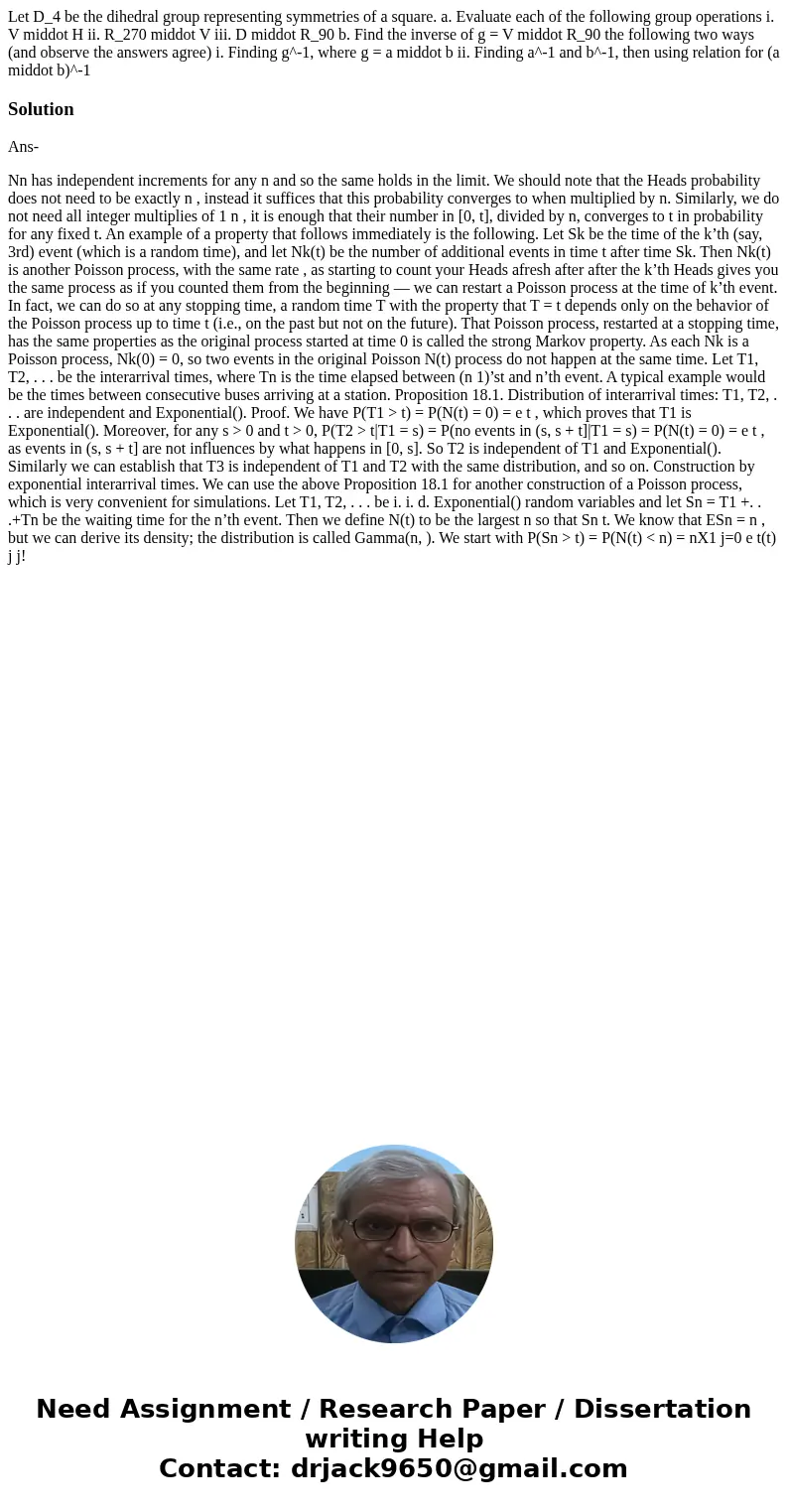Let D4 be the dihedral group representing symmetries of a sq
Solution
Ans-
Nn has independent increments for any n and so the same holds in the limit. We should note that the Heads probability does not need to be exactly n , instead it suffices that this probability converges to when multiplied by n. Similarly, we do not need all integer multiplies of 1 n , it is enough that their number in [0, t], divided by n, converges to t in probability for any fixed t. An example of a property that follows immediately is the following. Let Sk be the time of the k’th (say, 3rd) event (which is a random time), and let Nk(t) be the number of additional events in time t after time Sk. Then Nk(t) is another Poisson process, with the same rate , as starting to count your Heads afresh after after the k’th Heads gives you the same process as if you counted them from the beginning — we can restart a Poisson process at the time of k’th event. In fact, we can do so at any stopping time, a random time T with the property that T = t depends only on the behavior of the Poisson process up to time t (i.e., on the past but not on the future). That Poisson process, restarted at a stopping time, has the same properties as the original process started at time 0 is called the strong Markov property. As each Nk is a Poisson process, Nk(0) = 0, so two events in the original Poisson N(t) process do not happen at the same time. Let T1, T2, . . . be the interarrival times, where Tn is the time elapsed between (n 1)’st and n’th event. A typical example would be the times between consecutive buses arriving at a station. Proposition 18.1. Distribution of interarrival times: T1, T2, . . . are independent and Exponential(). Proof. We have P(T1 > t) = P(N(t) = 0) = e t , which proves that T1 is Exponential(). Moreover, for any s > 0 and t > 0, P(T2 > t|T1 = s) = P(no events in (s, s + t]|T1 = s) = P(N(t) = 0) = e t , as events in (s, s + t] are not influences by what happens in [0, s]. So T2 is independent of T1 and Exponential(). Similarly we can establish that T3 is independent of T1 and T2 with the same distribution, and so on. Construction by exponential interarrival times. We can use the above Proposition 18.1 for another construction of a Poisson process, which is very convenient for simulations. Let T1, T2, . . . be i. i. d. Exponential() random variables and let Sn = T1 +. . .+Tn be the waiting time for the n’th event. Then we define N(t) to be the largest n so that Sn t. We know that ESn = n , but we can derive its density; the distribution is called Gamma(n, ). We start with P(Sn > t) = P(N(t) < n) = nX1 j=0 e t(t) j j!

 Homework Sourse
Homework Sourse